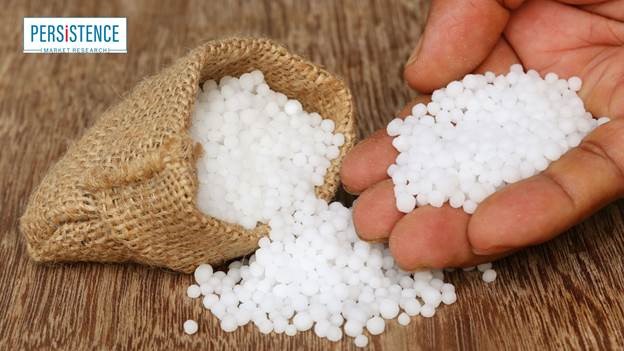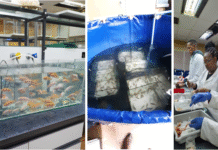The global agricultural landscape is experiencing unprecedented challenges due to factors such as climate change, population growth, and the need for sustainable practices. As a crucial component of fertilizers, urea plays a pivotal role in enhancing crop yields and ensuring food security. The traditional methods of urea production, however, are associated with energy-intensive processes and environmental concerns. In response to these challenges, the fertilizer industry is witnessing a transformative phase with innovative technologies aiming to improve market efficiency and sustainability.
Urea is a nitrogen-rich compound extensively used as a fertilizer in agriculture and as a raw material in various industrial processes. It serves as a crucial source of nitrogen, supporting plant growth and enhancing crop yields. Additionally, urea finds applications in adhesives, resins, and animal feed supplements. According to Persistence Market Research, the global urea market is presently valued at USD 32.5 billion. With a compound annual growth rate (CAGR) of 2.5%, the market is poised to reach USD 41.6 billion by 2023–2033. The escalating demand for food products, coupled with the need for sustainable agricultural practices, is propelling market expansion.
Current Landscape of Urea Production
Urea, a nitrogenous compound, is widely used as a fertilizer to provide essential nutrients to plants for optimal growth. Traditional methods of urea production involve the Haber-Bosch process, which utilizes high pressures and temperatures, contributing to significant energy consumption and greenhouse gas emissions. This has prompted researchers and industry players to explore alternative technologies that can address these environmental and economic concerns.
Innovative Technologies Driving Change
Green Ammonia as a Feedstock: One of the key innovations in urea production involves the use of green ammonia as a feedstock. Green ammonia is produced through the electrolysis of water to generate hydrogen, which is then combined with nitrogen extracted from the air. By utilizing renewable energy sources in the electrolysis process, this method reduces the carbon footprint associated with traditional ammonia production. Green ammonia serves as an eco-friendly precursor for urea synthesis, aligning with the industry’s push towards sustainability.
Next-Generation Catalysts: Catalysts play a vital role in urea synthesis, influencing reaction rates and energy efficiency. Researchers are actively exploring advanced catalysts that can enhance the efficiency of the urea production process. Nanostructured catalysts, for instance, offer higher surface areas and catalytic activities, allowing for improved conversion rates and reduced energy requirements. These innovations contribute to making urea production more economically viable and environmentally friendly.
Membrane Technology for Carbon Capture: Carbon capture and storage (CCS) is a critical aspect of reducing greenhouse gas emissions from urea production. Membrane technology is emerging as a promising solution for capturing and separating carbon dioxide during urea synthesis. By integrating membranes into the production process, carbon dioxide can be selectively separated, enabling its safe storage or utilization in other industrial processes. This not only mitigates environmental impact but also aligns with global efforts to combat climate change.
Renewable Energy Integration: The integration of renewable energy sources, such as solar and wind power, into urea production processes is gaining traction. By utilizing clean energy for the energy-intensive stages of urea synthesis, the industry can significantly reduce its carbon footprint. Moreover, advancements in energy storage technologies ensure a stable and continuous power supply, further enhancing the sustainability of urea production.
Market Efficiency and Economic Considerations
Cost Reduction through Innovation: While adopting innovative technologies may initially incur higher capital costs, the long-term benefits include reduced operational costs, increased energy efficiency, and compliance with environmental regulations. Governments and industry stakeholders are recognizing the economic advantages of investing in sustainable urea production technologies, considering the potential for long-term cost savings and improved market efficiency.
Market Competitiveness: As sustainability becomes a key factor in consumer and investor decision-making, companies that embrace innovative and eco-friendly urea production technologies gain a competitive edge. This shift towards sustainable practices not only meets the growing demand for environmentally conscious products but also positions companies favorably in a market where regulatory standards are becoming increasingly stringent.
Sustainability and Environmental Impact
Reduced Carbon Footprint: The adoption of green ammonia and carbon capture technologies significantly reduces the carbon footprint of urea production. By minimizing reliance on fossil fuels and integrating renewable energy sources, the industry can contribute to global efforts to mitigate climate change and achieve carbon neutrality.
Resource Optimization: Innovative urea production technologies also focus on optimizing resource utilization. Efficient catalysts and processes ensure that raw materials are used more effectively, reducing waste and enhancing overall production efficiency. This resource optimization not only benefits the environment but also contributes to the sustainability and longevity of the urea market.
Water Management: Sustainable urea production technologies also address water management challenges. Water is a crucial resource in urea synthesis, and advanced methods emphasize water recycling and conservation. By implementing closed-loop water systems and efficient filtration processes, the industry can minimize water consumption and reduce the environmental impact associated with urea production.
Challenges and Future Prospects
Technological Barriers: Despite the promising advancements, there are challenges associated with the widespread adoption of innovative urea production technologies. Technological barriers, such as the scalability of certain processes and the need for further research and development, must be overcome to ensure the practical feasibility of these innovations on an industrial scale.
Regulatory Frameworks: The fertilizer industry operates within a complex regulatory landscape. As governments worldwide implement stricter environmental standards, urea producers must navigate evolving regulatory frameworks. Industry collaboration and proactive engagement with regulatory bodies are essential to facilitate the seamless integration of innovative technologies while ensuring compliance with environmental standards.
Investment and Financial Considerations: The transition to sustainable urea production requires significant investments in research, development, and infrastructure. Companies must carefully weigh the initial capital costs against the long-term economic and environmental benefits. Government incentives and subsidies can play a crucial role in encouraging industry players to embrace innovative technologies.
In conclusion, the ongoing innovations in urea production technologies are poised to revolutionize the fertilizer industry, addressing environmental concerns, enhancing market efficiency, and contributing to global sustainability goals. From utilizing green ammonia to incorporating advanced catalysts and membrane technologies, the sector is witnessing a paradigm shift towards eco-friendly and economically viable practices. While challenges persist, the commitment of stakeholders, combined with regulatory support, will play a pivotal role in driving the widespread adoption of these innovations. The future of urea production holds the promise of a more sustainable and resilient agricultural sector, ensuring food security for a growing global population.









